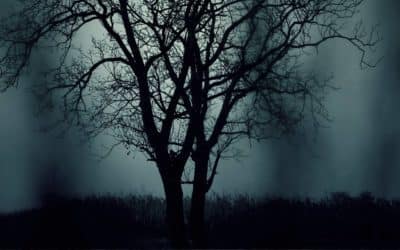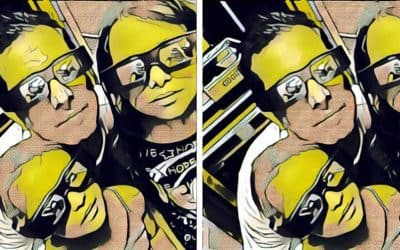
A Quick Step-by-Step Photo Workflow
In Part 1 of this series, I showed you the powerful rating and culling abilities of AfterShot Pro and how they can make it easy it is to make the switch from Lightroom. Hopefully, since then, you’ve taken my advice and have made the jump. If not, you can always download the free 30-day trial now so you can follow along with this tutorial.
Today, we’re going to dig a little deeper and take a look at how I post-process my RAW photos when I come back from a shoot or traveling on vacation. AfterShot is so incredibly easy to use and with a few quick tips, you’ll be on your way to some truly amazing results.
It’s likely my RAW photo workflow may differ from yours or other photographers out there, but we’ll start at the beginning with the basics and make our way through my entire workflow process as a baseline to help get you started.
Getting Started – Before Editing
Recently, I spent a couple days shooting a model in London and over the course of the two days I took more than 1,000 photos. This is obviously a huge number of photos, and more than the model or I will need.
The first step is getting my images off my memory card and narrowing down the field. The main goal is to get this number down to something I can work with. To begin, I create separate folders for Day 1 and Day 2 with the model and move the corresponding photos from my memory card to my hard drive.

Once that’s done, and with AfterShot Pro 2 open, I click on File System in the Directory View (found on the far left side of my screen), then navigate to the correct folder. Just double-click on the folder and watch the images instantly populate in a thumbnail preview panel.
Let’s go ahead and collapse the Directory View so I have more room to view my images and fewer distractions on my screen.
QUICK TIP: For even more space, try switching the layout thumbnail preview panel from vertical to horizontal by using hotkey ‘Cmd+L’ (Mac) or ‘Ctrl+L’ (Windows and Linux).
Culling & Rating Images
Now I need to cull my images, removing the bad ones and rating my favorites. You’ll find a whole post dedicated to this process in Part 1 of this series, Rating and Culling Your Images in AfterShot Pro.
After starting with more than 1,000 images, I’ve now narrowed the field down to my 4 favorites. It took me four rounds of going through all of my images, and a total of about 20 minutes.
The best part—I did it all in AfterShot Pro… It was fast & super easy.
For me, the best part was that I did it all in AfterShot Pro. No need to buy extra culling software, wait for my images to import to a catalog, or even wait for the previews to load. It was fast and super easy.
Correct Any Exposure Issues
With the culling and rating out of the way, it’s time to get down to work on these photos. Let’s start with this image of our model, one of the four I selected earlier.

Taking a quick look, the first thing I notice is she’s a bit underexposed, but I like the background just how it is.
AfterShot Pro has support for layer editing, so you can add a new adjustment layer, apply it to only a specific region, and then make adjustments to really fine tune the look of your photo.
QUICK TIP: Correct a single area or element of your photos by using AfterShot’s Adjustment Layer abilities and regional selection tools. You can apply any adjustment to a single area or the entire image.
Luckily, this whole process is a lot easier than it sounds!
Open the layers panel in the top toolbar (to the left of the magnifying glass) and add a new adjustment layer with +Adjust, then click on the Brush. Now you’ll need to brush over the area of the you want to adjust. In this case, I just brushed over the model and then slid the exposure up until I thought it looked good, which was up to 0.98.

Check & Adjust Sharpness
Next, I want to zoom in on the model’s face at 100% to check for sharpness. On this particular photo, I can see that her face is not as sharp as I like it. While still in the Adjust Layer 1, and still zoomed in at 100% on her face, I slowly bring up the Sharpening slider until I’m happy with the results. In this case I brought it up to 72. The reason I did this in the Adjust Layer is because I only wanted to sharpen the model, which it turns out conveniently was the area that I brightened in the layer as well. There’s no need to add sharpening to the out-of-focus, or bokeh, areas.
Correct White Balance
Look to the left of the photo below…In the photo below on the left, you can see that the camera’s auto white balance made the scene appear a bit blue. AfterShot Pro has a great built-in function that allows me to choose a white spot in the image to correctly adjust the white balance. You simply click the eyedropper tool next to the white balance drop-down menu, and click on what is supposed to be a white spot in your image. Instantaneously, the photo looks perfectly balanced!

A Few Final Adjustments
At this point, this photo is looking pretty good to my eyes… but there are a couple of things still bugging me that I’ll need to fix before I’m ready to export.
First off, in the vines up in the top right there is what appears to be some sort of reddish dot, and in the bottom right is a yellow leaf that is much brighter and bigger than the rest of the leaves in this image.
These small details can really distract a viewer from the hear of the image, and while you might not see them at first glance, it is important to give your photos a good study before you export the final edited image.
Once again, removing these annoyances is made easy thanks to Heal/Clone Layer abilities built right into AfterShot Pro.
To get rid of the red spot and leaf, I just click on the Layers button, which brings up a new window. Here, I click on the + Heal/Clone button, click on the circle icon, then click on the problem area of the image.
From there, I can then adjust where the tool clones from along with the amount of feathering so I end up with something that looks natural.
OK, so now I’ll just bump up the contrast a little… and I think it’s safe to say I’m done here, I’m happy with how this one turned out.
Export for Print or Web
I’m going to get this image ready to be exported as a JPEG so that I can send it to my client or post it to social media or my website (see this post on optimizing images before posting!). To do this I just click File > Export > Export Files. Then I can choose where I want to export the image(s), the image size (normal or proof), quality, and if I want to resize the image at all. I can also change the output name and location, image settings, metadata, and any additional output sharpening.
And that’s about it! I hope you’ll agree this photo looks much better after my edits.
Keep in mind this was a pretty simple edit that didn’t require a ton of work, but it’s a great baseline to get you started.
Of course, there are all kinds of more advanced things you can do in AfterShot Pro, too, so make sure you stay tuned for my next AfterShot tutorial!
Try AfterShot Pro today! Download the free 30-day trial and discover the faster way of working with your photos.









4 Comments